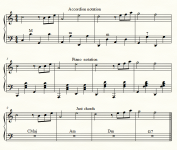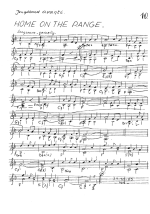Alans
Well-known member
- Joined
- Jul 20, 2014
- Messages
- 297
- Reaction score
- 92
I’ve been given the opportunity to play in a group but the music has treble written out but the bass clef only has one note-ie:A, or D7. I know where these notes are on the bass buttons but I don’t know if you hold that note during the entire bar or what you do with it. I guess one calls this a fake book-not used to reading accordion music this way.


